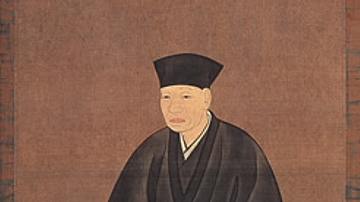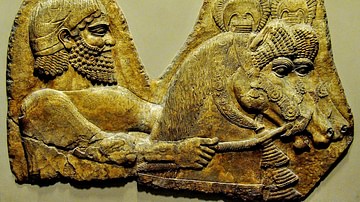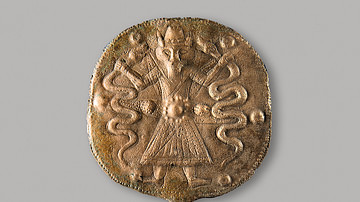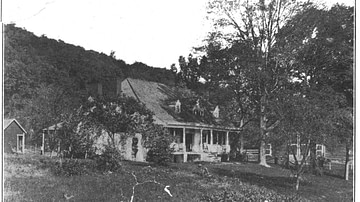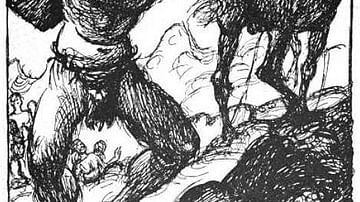Illustration
Alabaster-bas relief, part of a long tributary scene, where the Assyrian king, Sargon II (not shown here), stands majestically, waiting to receive the tribute from Urartu (modern-day Armenia). From the Royal Palace of Sargon II at Khorsabad, in modern-day Nineveh Governorate, Iraq, c. 710 BCE.
This male figure, distinguished from all kinds of staff, and recognizable by the pageboy's hairstyle and humble (or no) bearing, brings up the rear of a group of high-ranking Assryian officials or dignitaries. Those men have access to the sacred figure of the king and they always require an intermediary, as in all Assyrian tributary art. This man while scrutinizing his superior, so as not to miss even the slightest gesture, puts Sargon always in context and indicates towards the tribute bearers to come forward.
The Iraqi Museum, Baghdad.
About the Author
Cite This Work
APA Style
Amin, O. S. M. (2019, April 08). Assyrian Master of Ceremonies. World History Encyclopedia. Retrieved from https://www.worldhistory.org/image/10382/assyrian-master-of-ceremonies/
Chicago Style
Amin, Osama Shukir Muhammed. "Assyrian Master of Ceremonies." World History Encyclopedia. Last modified April 08, 2019. https://www.worldhistory.org/image/10382/assyrian-master-of-ceremonies/.
MLA Style
Amin, Osama Shukir Muhammed. "Assyrian Master of Ceremonies." World History Encyclopedia. World History Encyclopedia, 08 Apr 2019, https://www.worldhistory.org/image/10382/assyrian-master-of-ceremonies/. Web. 06 May 2025.




